In the previous chapter, “The brief history of motorcycles,” we discussed the motorcycles of the early and current days and how motorcycles have changed throughout the years. But now we will learn about Basic Motorcycle Systems.
There are many parts and systems that are common in all motorcycle types, some of which came in the early days and are still running in this era. Whether you are an owner or a mechanic, you must know the basic systems of a motorcycle. It will help you to understand the mechanics of motorcycles and how every part has a role in its processing.
So, let’s take a look at the basic parts and systems that we should all become familiar with.
The List of Basic Motorcycle Systems
- The Frame
- Wheels & Brakes
- Suspension
- Engine
- Drive Train
- Fuel System
- Ignition System
- Electrical System
Here we will discuss each part or system briefly but in later chapters, we will talk about each and every one of them separately and in more detail.
Frame
The motorcycle frame is like the backbone of the human body. A motorcycle frame provides support to both suspensions, the engine, and is also attached to the fuel tank and battery system. The frame has hinge points for the suspension and supports the rider or any luggage. Over time and new motorcycle designs, the frame’s core structure and material have also changed.
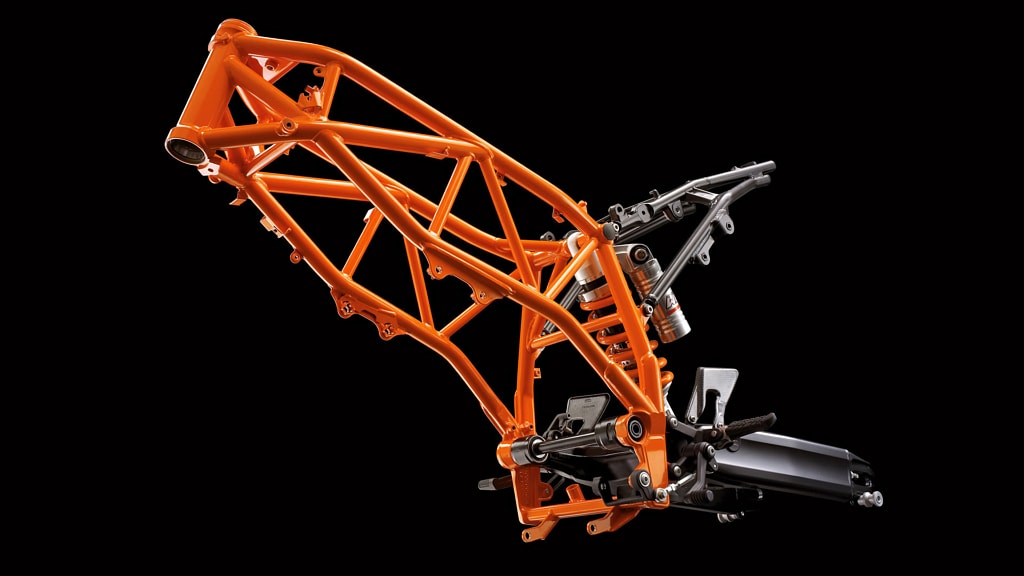
In the old days, the frames were made of tubular steel only, but now, in modern days, the frames are made of different materials like Aluminum, Titanium, Magnesium, and Carbon-fiber. But these materials are used on the basis of cost and other various parameters that are quite different across the different types of motorcycles. The types of motorcycles are also the reason for different types of frames that are now designed for complexity, weight distribution, and power, etc.
Wheels & Brakes
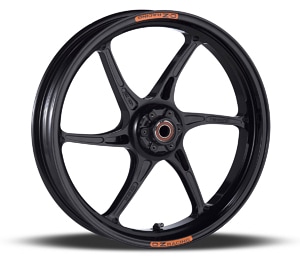
Like the frames, wheels have also changed over time. Back then, most motorcycle wheels were spoked for lighter weight and rigidity. In the old days, stamped or pressed steel wheels were used. In fact, now many minibikes and low-cost motorcycles come with pressed steel wheels. But alloy wheels are being used in most other motorbikes, which are quite costly.
The main reason for the high usage of alloy wheels over steel wheels is because of the light weight. Alloy wheels are made of an alloy of aluminum and magnesium, which are very light in weight compared to steel wheels. Since they are lightweight, alloy wheels provide more acceleration and less strain on suspensions and brakes.
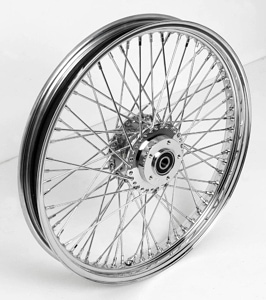
However, the steel wheels being used in less expensive bikes are rigid but also heavy. Despite that many people still choose steel wheels over alloy wheels because they are easily maintained and less expensive.
When talking about brakes, they are applied with a cable and lever system or hydraulic systems that use fluid under pressure to operate.
There are two types of brake systems used in motorcycles – 1. Drum brakes and 2. Disc brakes.
As you can see in these images, the disc brakes have a rotor, disc pads, bearings, and other parts. On the other hand, drum brakes have a backing plate, springs, and brake shoes, etc.
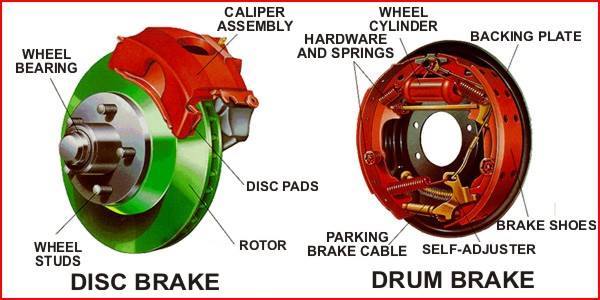
Suspension
The suspension is used to provide comfort to the rider by minimizing the road shocks and vibration. On motorcycles, the front and rear suspensions are different.
The front suspension system is the telescopic forks that are a combination of internal springs, sliding tubes, and hydraulic dampening to reduce road shocks and provide a smooth ride to the motorcyclists. There is another type of front suspension system which is the Earles Type, which greatly used in off-road motorcycles.
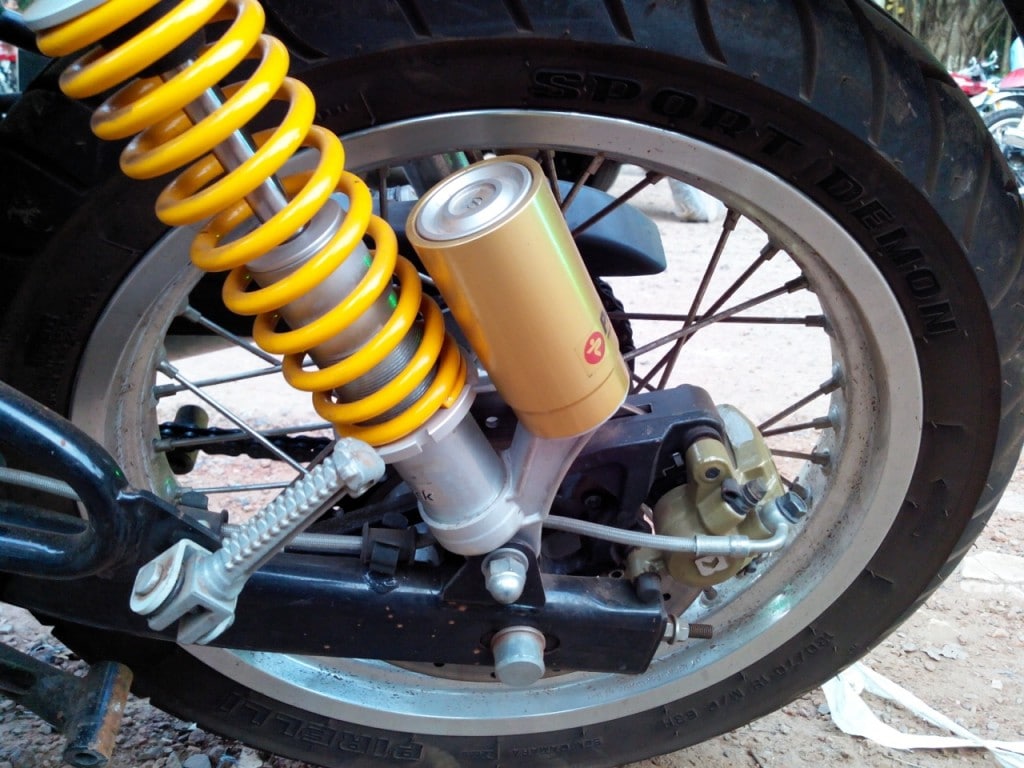
However, the rear suspension system consists of swing arms that attach the frame to the rear wheels. The coil spring shock absorber combinations attach to the swingarm near the axle, which is fixed to a solid frame.
Engine
The most important part of any motorcycle is its engine. Knowing your engine’s configuration or design is something very common you will see in motorcycle enthusiasts. There is a lot of arguments regarding the 2-Stroke engine versus the 4-Stroke engine. Is a bigger engine always better? Well, there is no doubt the motorcycle engine is a very important system. So, let’s take a look at the different types of engines and find out “how these engines work?”
4-Stroke Engine
The four-stroke engine is used in many motorcycles, cars, and trucks. It was first demonstrated by Nikolaus Otto in the year 1876 and from that point, it became known as the Otto Cycle.
Intake Stroke
During the intake stroke, a piston moves downward drawing a fresh charge of fuel and mixture. Then the air and the mixture enter into the combustion chamber.
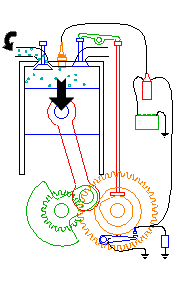
Compression
In the compression process, the piston rises and compresses the mixture of air and fuel.
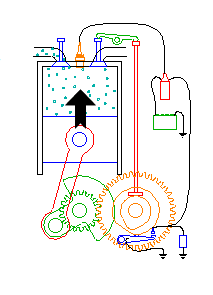
Power
At the top of the combustion chamber, the spark plug fires and ignites the compressed fuel. When the fuel is burned, it expands, which drives the piston downward.
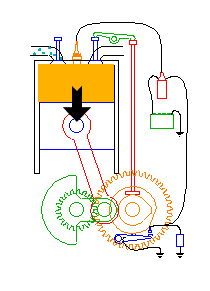
Exhaust
And when the piston rises upward once again, it forces the sludge or exhausted fuel to go out of the exhaust valve, which is opened by the cam/lifter mechanism.
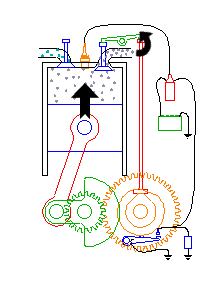
2-Stroke Engine
In simple language, a 2-Stroke engine completes the same process in only two strokes of the piston. Let’s see how it is done in a 2-Stroke Engine.
Intake Stroke
The air/fuel mixture enters into the crankcase by a vacuum port, which is opened during the upward stroke of the piston.
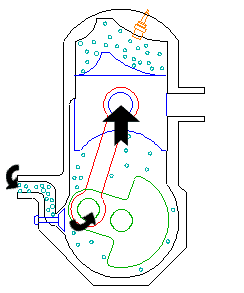
Crankcase Compression
In the downward stroke, the intake valve is closed by the crankcase pressure and the fuel mixture is then compressed during the remainder of the stroke.
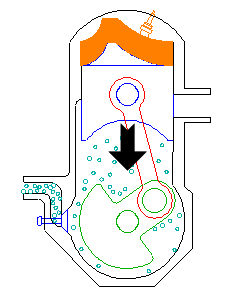
Transfer/Exhaust
Towards the end of the stroke, the intake port opens once again and the piston allows the compressed air/fuel into the crankcase, which moves around the piston into the chamber. This compressed fuel/air expels the exhaust gasses or sludge from the exhaust port located on the other side of the cylinder.
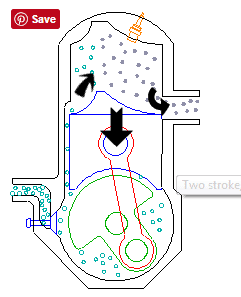
Compression
Once again, the piston rises and compresses the fuel/air mixture and at the same time, another stroke is occurring beneath the piston.
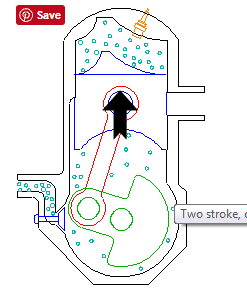
Power
At the top of the stroke, the spark plug ignites the mixture. The result, burning fuel expands, driving the piston downward to complete the cycle.
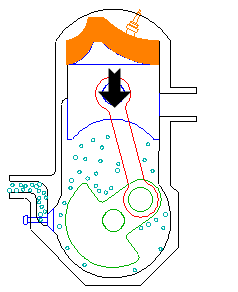
There is a lot to discuss about the 2-Stroke and 4-Stroke engines, which we do in later chapters. And we will also learn about Twin and Multiple Cylinders.
Drive Train
The engine provides the power to turn the rear wheel and the mechanical systems connected to the engine and the rear wheel is called the Drive Train.
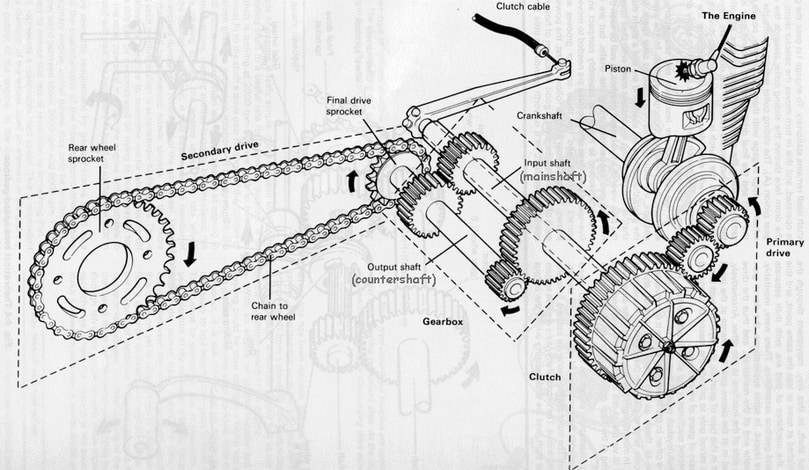
Fuel System
The Fuel System of the motorcycle is used to store or regulate fuel during the compression occurring in the cylinder. As you can see the fuel system in the figure below, it has various parts, which play different and key roles in the process of storing and regulating fuel.
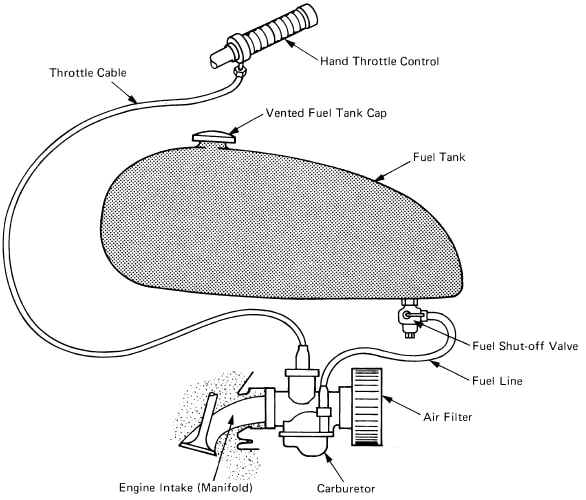
Ignition
Ignition is used to start the fuel burning to make the piston to go down and make the motorcycle move. There are three types of ignition systems which include –
- Magneto Ignition System
- Battery and Coil Ignition System
- Electronic Ignition System
Electrical System
A motorcycle needs electrical systems to increase the safety for a rider. Besides the ignition system, the motorcycles have a headlight and taillight, warning lights, turn signals (indicators), horn, radio, and electric starters, etc.
Now, you have gone through the basic motorcycle systems that are common in most motorcycles. You can learn about these systems from here one by one. This can help you to stay informed about the latest technology used in motorcycles each year. After all, it would be a good thing to fix your motorcycle on your own.
As I mentioned earlier, you can learn about every motorcycle system in detail in later chapters, where everything will be described in detail, which may help you to improve your mechanical skills.
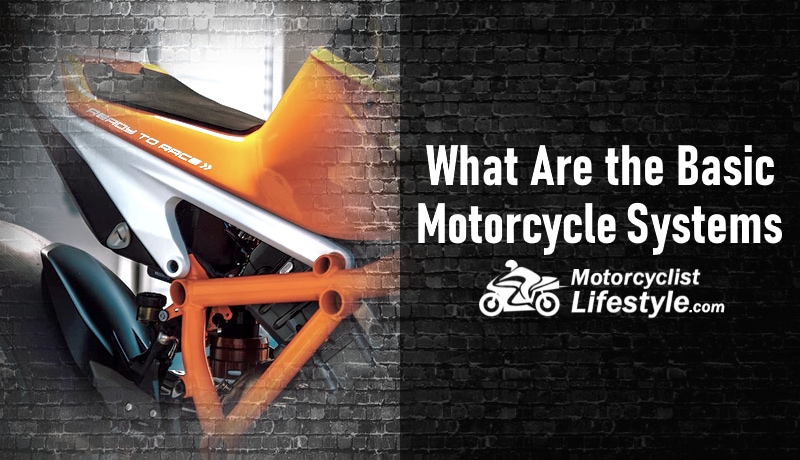
Thank you so much, am entering motorcycle mechanic soon, but that you for highlights.
Let me know… The name of parts that is connected to the end of the speedometer cable other than the one that is connected to the speedometer.
Thank you so much, I have gotten basic knowledge on a motorcycle.
Thanks alot
Would love to be getting information from u guys
Thank you very much! Atleast, however. I have a knowledge how the motorcycle engine works.
You are welcome, thank you for reading our blog!